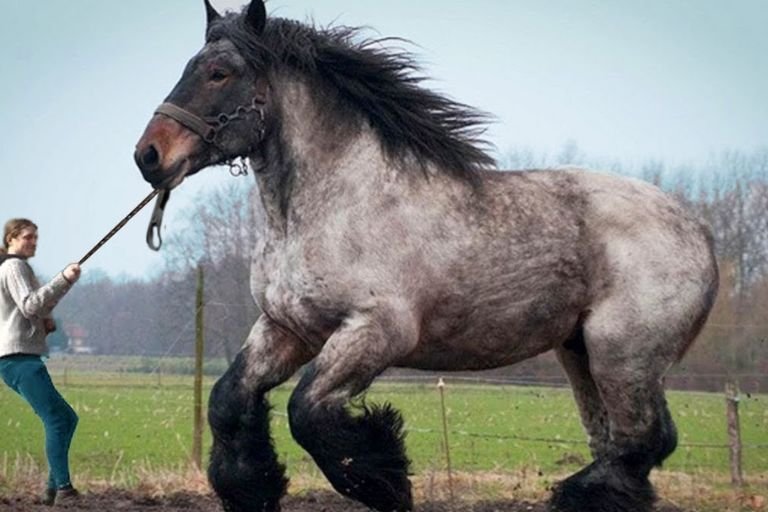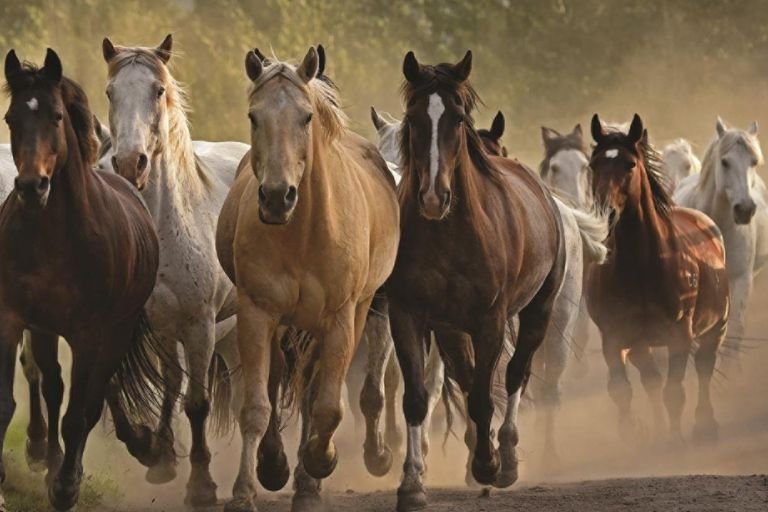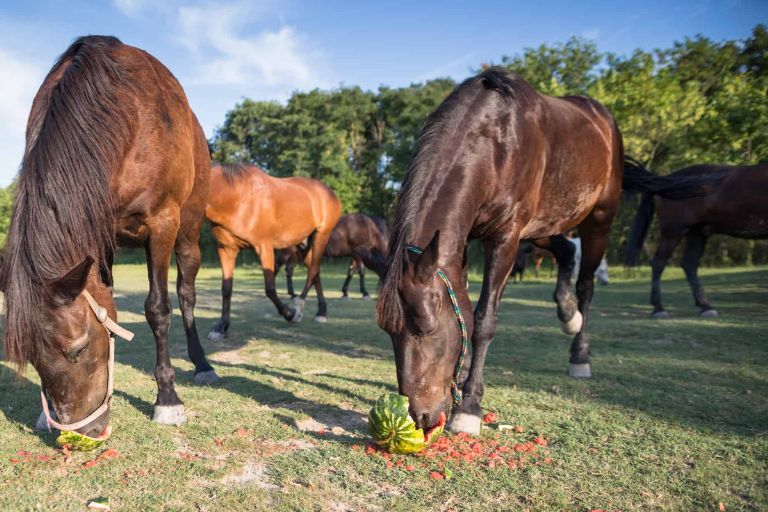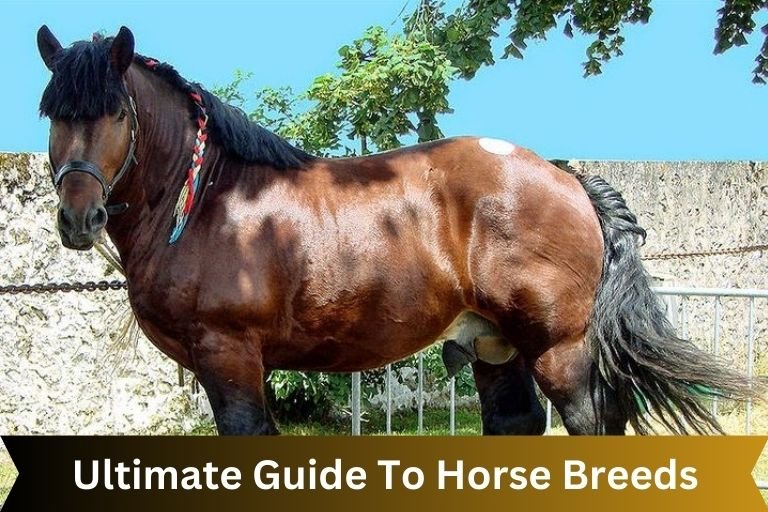Horses have fascinated people for a long time because of their beauty, grace, and strength. Each horse breed, like the Arabian and Clydesdale, has special traits. This explores Ultimate Guide To Horse Breeds different horse breeds worldwide, examining their origins, physical features, and personalities.
Whether you love horses or are curious, this guide will show you the variety of horse breeds today. Through selective breeding over many years, horses come in different sizes, colors, and abilities. Join us on a journey through history to learn about the wonders of various horse breeds.
Ultimate Guide To Horse Breeds – Biggest Horse History
Horse breeds have a long and interesting history. Different types of horses were developed in various regions for specific purposes such as transportation, agriculture, or warfare.
Over time, these breeds were mixed and exchanged, creating new hybrids with desirable traits. This led to the development of iconic breeds like the Andalusian and the Friesian. Horses have played a crucial role in human societies, aiding communication, exploration, and survival.
Today, we see their influence in modern breeding practices as we enjoy watching them in equestrian sports and leisure activities.

Types Of Horses
We will discuss some types of horse breeds.
White Arabian Horse
The White Arabian Horse is famous for its beauty and grace in the horse world. It has a white coat and elegant features that make it look royal. People admire its intelligence, loyalty, and endurance. These horses have a long history and were valued by desert tribes for their strength and speed. They later became symbols of status for royalty.
White Arabian Horses are loved for their beauty and skills in different horse activities. They are a mix of beauty, athleticism, and heritage. Whether in competitions or leisure rides, these horses always make a strong impression. Horse fans appreciate the timeless charm of the White Arabian Horse.
Friesian Horse
The Friesian horse is a majestic breed known as the Black Pearl of the Netherlands. They have black coats, flowing manes, and feathered feet, giving them a regal appearance. Friesians are gentle and enjoy working with humans, making them popular rider companions. They originated in Friesland, Netherlands, and were initially bred as war horses.
Over time, they have become skilled athletes in dressage, driving competitions, and show jumping. Despite their size, Friesians are agile and athletic, displaying a unique blend of power and grace. Whether performing dressage or pulling carriages, Friesians always leave a lasting impression on people.
Thoroughbred Horse
Thoroughbred horses are famous for their speed and agility in horse racing. They are bred for their athleticism and have a history of sports success. Their sleek build, strong hindquarters, and graceful stride help them win races. Thoroughbreds are good at racing and excel in equestrian activities like show jumping and dressage.
They are intelligent and versatile, making them a top choice for competition riders. Thoroughbreds are known for their strong work ethic and eagerness to please, making them great companions for riders. The bond between rider and Thoroughbred is special, based on trust, respect, and admiration for each other.
Thoroughbreds are loved worldwide for their speed, athleticism, and beauty. They impress in races and other events with their talent and grace. Those who have worked with Thoroughbreds know they represent excellence in the horse world.
Mustang Horse
The Mustang horse represents freedom and strength. They come from the American West and have adapted well to tough conditions. Their wild spirit and strong body make them unique. Their flowing mane shows their untamed beauty. Mustangs are smart and agile and good at activities like riding and sports.
Despite challenges like losing their habitat and too many horses, more efforts exist to protect them. By saving them, we can make sure that people in the future can still enjoy these amazing horses.
Shire Horse
Shire Horses are large, gentle horses with a history of being strong workers. They came from England and were valued for their ability to pull heavy loads. Despite their size, they are known for being friendly, making them popular for work and companionship.
One interesting thing about Shire Horses is their long hair on the lower legs, which helped protect them while working in fields or forests. This hair, called feathering, is a distinctive feature of the breed and adds to their beauty. Shire Horses are strong and beautiful but also smart and eager to please.
They can do well in horse activities, from driving competitions to farm work. Their mix of strength and elegance continues to impress people worldwide.
Leopard Appaloosa Horse
The Leopard Appaloosa horse is a special breed with a spotted coat. Their unique appearance makes them popular among horse lovers. The spots on their coats come in different sizes, shapes, and colors, creating a beautiful pattern.
These horses are good at jumping, dressage, and western riding. They are strong, smart, and friendly, making them great companions for riders. Whether you want a showy horse or a reliable trail partner, the Leopard Appaloosa is a great choice for looks and performance.
What Can Horses Do
Horses can form strong emotional bonds with people, which makes them great for therapy. This kind of therapy, called equine therapy, helps people become more aware of their emotions and develop better emotional skills.
Horses are also skilled athletes who compete in sports like show jumping, dressage, and horse racing. They are strong, agile, and graceful, making them tough competitors.
Horses are important worldwide in farming and transportation because of their strength and endurance. They are smart animals that can learn complex tasks through training. They can be trained for police work, search and rescue missions, and even performing in shows like the Lipizzaner Stallions. Their many talents show how amazing horses can be.
What Is A Service Animal?
While most people are familiar with service dogs, the service horse is another type of service animal gaining recognition. These majestic animals are trained to assist individuals with physical disabilities in various tasks, such as opening doors, navigating obstacles, and providing balance support. Their size and strength make them well-suited for helping those with mobility difficulties.
Horse Features
Horses have many interesting features that make them special. One standout feature is their big, expressive eyes, which are a striking part of their appearance. Horses have great eyesight and can communicate through subtle eye movements.
They are also known for their strong, muscular bodies, with powerful legs that help them run fast and travel long distances easily. This strength is important for survival and adds to their graceful and beautiful movement.
Miniature Horses As Service Animals
Miniature horses are smart, agile, and gentle animals that are becoming more popular as service animals. They can be trained to help people with disabilities in various ways. Unlike service dogs, miniature horses live longer and can work for many years, providing consistent help. Their small size allows them to move easily in tight spaces, making them great for crowded areas.
Miniature horses attract less attention and face fewer restrictions in public places than service dogs. They are a versatile option for people who need mobility or emotional support. With the right training and care, these amazing animals are great companions for people with different needs.
Horse Training
Training horses requires patience, consistency, and an understanding of horse behaviour. Building trust and respect with the horse is important to communicate effectively and shape their behavior. Positive reinforcement, like clicker training, can help teach new behaviors and improve existing ones. Understanding pressure and release is key in horse training.
Applying pressure to get the horse to respond, then releasing it when they do, helps the horse learn. This method improves handler and horse communication, leading to quicker learning and better outcomes. Training horses also involves recognizing their strengths, weaknesses, fears, and motivations to create a customized approach for each horse.
Where Do Horses Usually Live
Horses like wide open spaces and nature. They usually live in places with much room to eat and move around. Some are on farms, but many are in pastures where they can eat grass with other horses. This helps them stay healthy and happy.
Horses can also be in stables or barns for shelter from bad weather. These places have food and bedding for them to rest. Even though they are domesticated, horses do well when they can be outside, breathing fresh air and getting sunlight. Giving horses both freedom to move and shelter keeps them healthy and happy.
Average Life Of Horses
Horses can live around 25-30 years, varying based on breed, size, and health. Larger horses tend to live shorter lives than smaller ones. To help horses live longer, they need exercise, good food, and regular vet visits. Building a strong bond with your horse is also important for their well-being. Even though horses don’t live as long as some other pets, every moment with them is precious and creates lasting memories in our hearts.

Symptoms Of Horse Dying Of Old Age
Here are a few of the potential symptoms your horse may show before passing away:
Persistent Illness: Living with a persistent illness is tough. It affects every part of life, making daily life a struggle. It can be tiring and draining, both physically and mentally. But it also shows how strong and resilient a person can be. Adjusting to a new way of living, accommodating limitations, and trying to keep things normal takes patience and self-kindness.
It can feel lonely, but it also helps in understanding and caring for others going through similar challenges. Over time, managing a persistent illness is less about finding a cure and more about living fully despite its limitations. It’s about accepting the unknown and cherishing each moment, no matter how small. Through this, one learns to be strong in vulnerability and finds beauty in resilience during tough times.
Inability to Recover: Struggling from setbacks can feel like sinking in quicksand, deepening into despair. It’s like wanting to win a race but feeling stuck and defeated. This helplessness can be overwhelming, trapping you in self-doubt and frustration. When we can’t overcome challenges, it’s important to remember setbacks are temporary obstacles to success.
Instead of seeing failure as a weakness, we should view it as a chance to learn and grow. Embracing our weaknesses and limits can lead to new opportunities and breakthroughs, helping us become resilient and successful.
From Injuries: Injuries can harm our bodies and affect our mental and emotional well-being. Pain reminds us of our vulnerability and mortality. We are tested during tough times – will we give up or stay strong? Injuries can make us rethink our lifestyles and priorities.
They push us to grow and adapt. Recovering from an injury teaches us about patience, perseverance, and self-care. Despite the pain, injuries help us learn about ourselves. We appreciate movement and health more, realizing how strong and fragile our bodies are. Through vulnerability and strength, we become grateful for every step towards healing.
Changes in Behavior: As horses get older, they may show signs that they are nearing the end of their life. One common sign is a decrease in activity and energy. Older horses may be more tired and spend more time resting. Another change is a loss of appetite.
A horse close to the end of its life may not be interested in eating or drinking, which can lead to weight loss and dehydration. Older horses may also show discomfort or pain, like trouble getting up or walking stiffly. Horse owners should pay attention to these changes and talk to a vet for advice on caring for their aging horses.
By noticing these signs and giving the right care, owners can help their horses have a peaceful transition into their next stage of life.
What Can You Do?
Keep Your Horse Company: Spend time with your horse daily to keep them happy. Groom them, ride them, or hang out with them in the pasture. Horses like being around others, so your presence can prevent them from feeling lonely or bored.
You can also introduce your horse to a friend, like another horse or a donkey. Having a buddy can give your horse someone to play with and interact with, making them happier and healthier. A companion can also help your horse feel less stressed and provide support during tough times. Keeping your horse company helps them and strengthens your bond with them.
Surround Your Horse With Familiar Things: To help your horse feel safe and secure, surround it with toys and blankets. This can reduce stress and anxiety. Stick to a feeding, exercise, and grooming routine to create a comforting environment. Doing these things can improve your horse’s well-being and strengthen your bond with them.
Maintain Familiar Routines: Horses need familiar routines to stay happy and healthy. They like knowing what to expect, which reduces their stress. Keeping a regular schedule for feeding, exercise, and time outside gives horses a sense of security. This helps them feel more at ease around people. Besides physical routines, it’s important to keep horses mentally stimulated.
Training and challenges can keep them interested. Building trust and understanding with your horse is crucial for a smooth routine. Consistency is key to ensuring your horse feels safe and cared for daily.

How To Increase The Life Expectancy
To help your horse live longer, focus on giving it good food. Ensure it has quality forage and a balanced diet with all the nutrients it needs. Exercise and take care of its hooves to prevent health problems. Regular vet visits can catch any issues early and get them treated quickly.
Don’t forget vaccinations, deworming, and dental care to keep your horse healthy. Lastly, give your horse a safe and calm environment with shelter from bad weather to help it live longer.
Conclusion
Understanding the various Ultimate Guide To Horse Breeds is essential for anyone looking to enter the world of equestrianism. Each breed has unique characteristics and attributes that can cater to different needs and preferences. By familiarizing yourself with these breeds, you can make informed decisions when choosing a horse that suits your riding style and goals.
Whether you’re interested in a spirited Arabian or a sturdy Clydesdale, there’s a breed out there for everyone. Take the time to explore the diverse world of horse breeds and embark on an exciting journey into the fascinating realm of equine genetics and history.
Master the art of raising Black Australorp chickens with The Ultimate Guide! Essential information, care tips, and expert insights.
Frequently Asked Question
How Do I Choose A Horse Breed?
Horses vary in size, breed, color, temperament, and health. Consider these factors based on how the horse will be used and the rider’s experience with horses.

